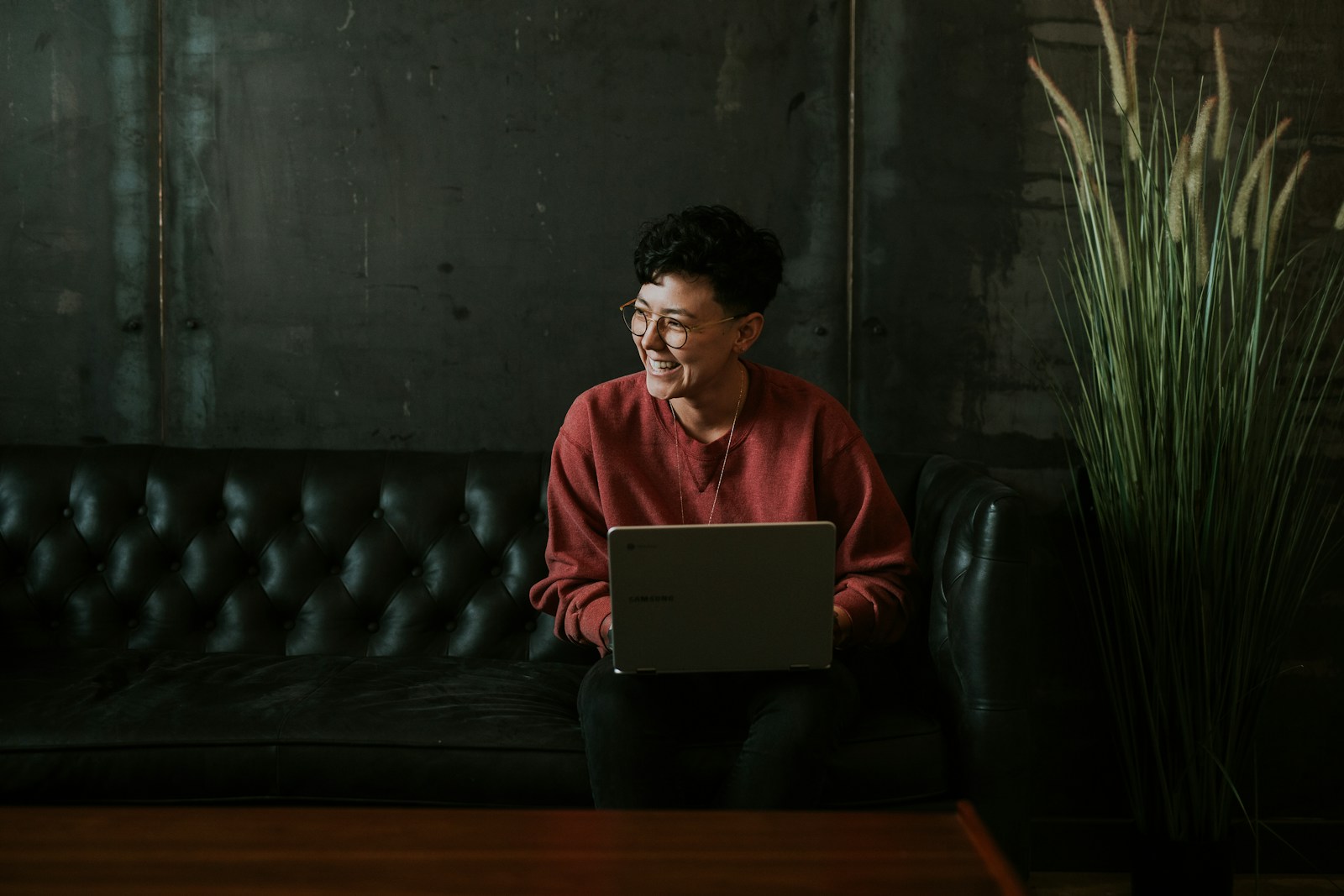In April 2022, Airbnb announced an approach to allow employees to live and work anywhere by partnering with destinations to help them attract remote workers and people working from home.
“The office, as we know it, is over,” Chesky said in a recent interview for Time’s The Leadership Brief. Or is it? We put our investigative hats on and explored the good, bad, and practical steps for professionals embracing the remote working life.
There are so many perks – no commute, no office politics, no dress code, forced relationships with colleagues, no Monday Blues. Just pure bliss and calm, and an opportunity to spend all day in your PJ.
However, it also presents a set of disruptive challenges. Examples include constant cleaning opportunities, YouTube motivational videos, demanding pets, deliveries arriving (yours and your neighbours!), afternoon naps, closet re-organisation, etc.
So is the future fully remote? Max, CEO and co-founder of Officely, a desk booking tool for hybrid offices that lives in Slack, has a different view on the matter.
The future of work is hybrid. Employees will be free to choose where they work depending on their stage of life and role.
Quality of life for employees with commitments outside of work is a big positive, admits Max, but when it comes to remote vs in office, there is no better or worse, only different.
“Companies must understand the differences and choose what is right for them based on their goals”, he points out. “For example, if they are looking to create a young, energetic culture, office based work or hybrid is the way. Whereas if they are looking to focus on the quality of life of their employees, particularly if they employ a lot of parents, remote working is a great option.”
In his opinion, employees should be free to choose the number of days they spend in the office based on their workload. “Managers, if you can’t trust your employees to do that, you’re hiring the wrong people!”
Teams can still bond and connect when hybrid working is involved.
Organising in-person events in the office is a great way to drive people back together. “It can be as simple as pizza and drinks on a Thursday night. Don’t overthink it. Make it fun and inclusive.”
If you are looking to start working hybrid or remotely, it can present more than one challenge, so we enlisted a few experts to share how they keep motivated when working from home.
Connect with your purpose
Becky Stanton is a mindset and manifestation coach for female entrepreneurs. She encourages you to re-connect with your goals daily. Be intentional with your future. Become clear on what your purpose and life mission are.
“Break this down into goals – from 10 years to monthly to daily. Each daily goal then connects back to your big intentions.”
Every morning, read through your big life goals, close your eyes, and imagine yourself living that dream. “Feel the emotions and connect with the experience you’re working towards.”
Any plans (or procrastination tasks) that do not align with your dream can be dismissed or forgotten. As you move away from being constantly distracted, practice this repeatedly throughout your day. You can set alarm reminders every few hours to encourage you to re-connect and focus.
Work from home office practices from Feng Shui
Feng Shui is an ancient Chinese system designed to create balance and harmony in our lives through cultivating chi (or the energy flow) around our homes.
Becky suggests placing your desk facing the doorway for an instant surge in focus and productivity. “Many people optimise the space’ by placing their desks against a wall or a window. In Feng Shui, it’s called the Poverty Position, and it’s not doing you any favour!”
Energy flows through the door, but often, your back will face the incoming flow in this position. As a result creates heightened brain activity as your subconscious feels threatened and unsupported, facing the wrong direction. You may feel distracted and unfocused.
Switch to the Power Position by making sure your desk faces the door. “Your brain waves will be less alert, enable more concentration, notice opportunities and produce more joy.”
Remote working routines for entrepreneurs
Ben Austin, Founder and CEO of Absolute Digital Media, shares some tips for CEOs and entrepreneurs working from home.
Start the workday as though you were going into the office.
You can’t let the comfort of being in your own home prevent you from developing a “going to the office” mindset every morning, evening or night when you begin working. Whilst some jobs will require getting out of your home, some do not.
If you are working from home, he suggests having a designated office-like area, with a quality computer and fast, reliable internet service. Have a plan of action that is achievable for your day. “If you have a rather ambitious goal, break it up into smaller tasks that you know you can do so that you don’t feel so overwhelmed.”
You’ll get things done and do the same routine the next day because you weren’t overwhelmed with your tasks.
Similarly, Debi Wallbank, entrepreneur menopausitivity mentor, points out why entrepreneurs should schedule Income Producing Activities every day.
“They’re usually the things entrepreneurs like to do least but are the things that generate the income and, therefore, crucial! Blocking out a set time every day (even if just 10 minutes) to do these tasks quickly eliminates any fear or dread.”
Clear your home desk clutter
Your subconscious mind notices EVERYTHING around you. Time to have a hard look at your workspace and look for any clutter. Look at anything that is not making your work day successful and abundant.
Only keep items that directly align with your work or bring joy and inspiration to you while you are working.
Discard any unwanted documents, books, or office stationery you don’t use (hello stapler!), alongside things that deserve a space elsewhere in your home. Schedule time to declutter your room and your subconscious mind will not be distracted from everything it sees and has to process.
Debi also shares a simple tip to help with mental clutter over the physical one. Pick your task and see it through to completion or until the allocated time you have given it has elapsed.
“Don’t try to respond to messages simultaneously like writing an email campaign or creating social media content. Keeping focused on one task at a time makes a better and more effective result – often in less time.”
Practice transitioning from working to living
When you work from home, the line between home- and work-life blurs, and you may feel constantly alert to your work.
Every so often, leadership coach Katy Hope recommends changing work locations when working from home.
“Variety is essential in keeping up your energy and your focus. It could be moving from the home office to the garden or a local café.”
With your office within walking distance, it can be challenging to stop working and unwind to spend time with your loved ones. To make the transition easier, create a new habit or ritual that symbolises the end of your working day.
Katy shares another trick that worked for her. “Try leaving the house by the front door as though you are commuting to work and entering again through the back door to start work. Then reverse the process when you’re ready to sign off for the day.”
Your habit could be something physical – taking your dog for a walk, going for a run or changing into different clothes – or something mindful – yoga, meditation or reflecting on the day.
Whatever it is, make sure it is something that transitions you to a relaxed and calm version of yourself and aligns with your lifestyle and passions to ensure you maintain the new habit.
We all need space and time away from our work – as that’s where the creativity and inspiration flow. We need disconnection for more connection, which will keep you more focused and energised for your next working day.
Want more? Here's your invitation from the school ⤵️
We don’t teach you how to do more. We teach you how to do it better.
You don’t need more hacks. You need smarter foundations, better systems, and clarity that cuts through the noise.You got into this to make a difference. Let’s help you do that, with strategy and a whole lotta heart.
➡️ Find out how we can help via our all-access pass.



